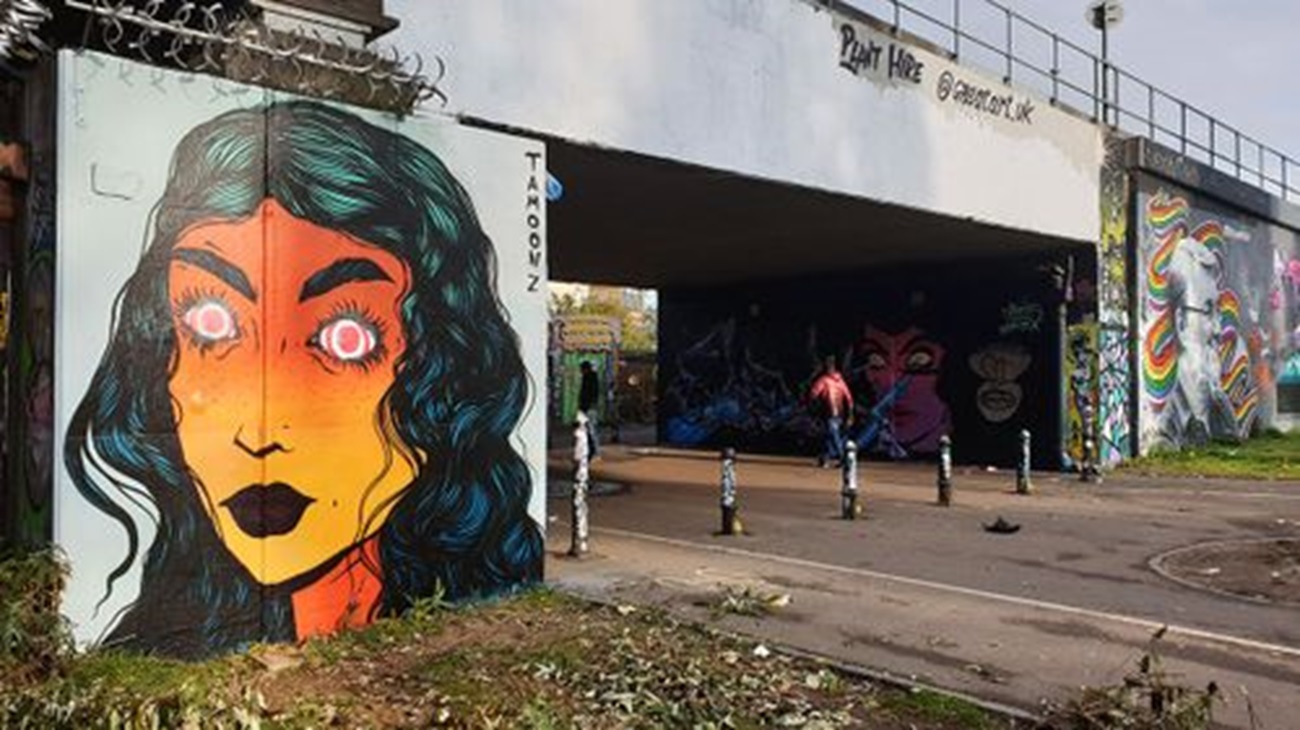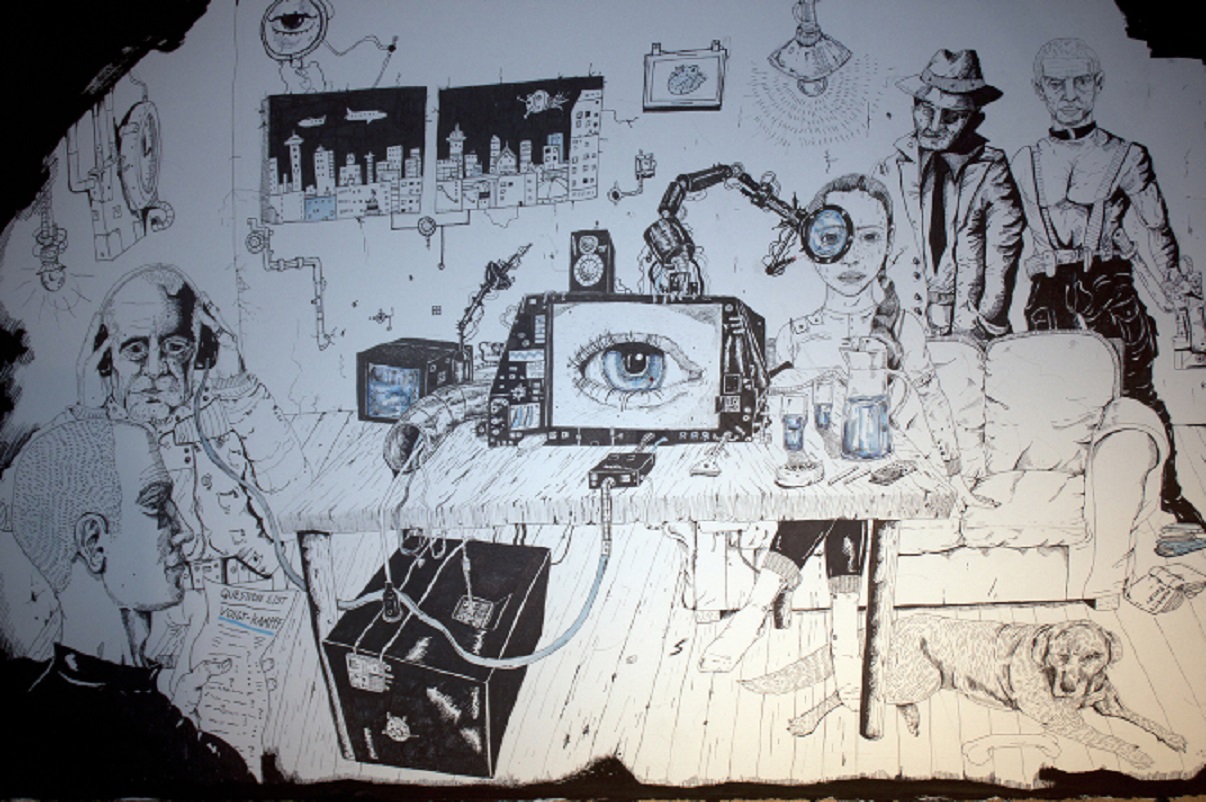There are two ways of living life, the linear way and the nonlinear. The first way seems real to us, but it isn’t, whilst the second simply doesn’t make any sense at all (and is contrary to everything we believe in). The linear way of doing things really means control and control means going down the tracks that have been laid for us by the thinking mind. It means ‘never questioning our core assumptions’, therefore (since this is how thought works).
Control simply means ‘copying’, we can therefore say, although we can’t generally understand this. It’s completely non-creative. We’re copying out the pattern that has been given to us, we’re building upon what has been taken for granted. We can’t see this to be the case and – as it happens – we see things completely the other way around. We perceive it to be the case that control gives us what we call ‘choice’, and for us choice is everything.
When we think about the world we degrade it, we simplify it, we turn it into an oversimplified analogue of itself. This is of benefit to us in that it allows us to focus clearly on the black-&-white details of whatever it is we are looking at, but it ceases to be a benefit when we start to mistake the oversimplified analogue for the real thing, for ‘the unedited original’. When we do this then everything gets turned on its head, although we are now incapable of seeing this – thought provides us with an ‘inverted analogue’ of reality whilst implicitly claiming to be telling us the honest truth…
We bring everything into sharp focus by restricting the range of what we are willing to admit as being real. We put a cut-off point in place, an arbitrary boundary, such that everything that exists on the other side of the boundary is disregarded as if it is no of no consequence, as if it there are going to be no unwanted consequences if we do this. We’re saying ‘Let’s pretend that what’s out there, beyond the boundary that we have put in place, isn’t going to contain any radical surprises (or ‘Let’s pretend that what lies beyond boundary doesn’t exist). That’s how we oversimplify our picture of the world – by playing games, by arbitrarily ignoring stuff and (implicitly) saying that what we have ignored doesn’t exist.
This is a perfectly legitimate thing to do – it is after all impossible to say anything about anything if we don’t limit the scope of our inquiry! The domain is just too broad otherwise – it’s uncontained and so we don’t know what’s in it. We can only know stuff when it IS contained, when there is a context. In effect what we’re doing is that we’re setting up a figure / ground situation so that we don’t get perplexed by having to look at the whole picture. The rule is that we must pay no attention at all to the ground, we must give no heed at all, and this is of course what makes it ‘the ground’! The rule is that there’s nothing interesting to see apart from the figure and it is this focusing of our attention (which means ‘ignoring the bigger picture’) that makes the figure stand out in all its clear-cut or precise detail. We don’t ever stop to consider that the world we perceive ourselves to live in has been created by ‘unevenness of attention,’ or ‘perceptual neglect’, but this is most assuredly the case…
Although limiting our attention is a perfectly legitimate thing to do, a perfectly legitimate ‘experiment’ to make (why shouldn’t we make any experiment that we want to, after all?) it also carries a very great danger – the very great danger being that we take what was meant as an exercise in ‘It is as if…’ (which is an entirely playful or whimsical kind of a thing) as a blank statement of fact that doesn’t need to be looked at further into anymore. The light and the ironic thus degenerates into the brutal ‘It is’ which is the doorway into a horrendously crude literal or concrete (and not at all playful) universe. It isn’t real either, but merely an ‘un-owned mental projection’. ‘Is’ is a meaningless thing when we’re talking about actual reality since we have no basis whatsoever for making positive assertions – we only have grounds for making positive statements (in the way that we are so prone to doing) when we have created an artificial world (or toy universe) in which all the parameters have been clearly defined in advance.
‘It is as if…’ is splendidly light and airy and we can take it or leave it as we please; it is humorous, subtle, creative, nuanced, and enigmatic. When this light touch decays into the crude dogmatic certainty of ‘It is’ however then it becomes the reverse of light and airy, the reverse of humorous, subtle, creative, etc – it’s like a big (Monty Python style) boot coming down in our heads and crushing us deep into the squalid mud of collective thinking. This happens so very easily – we have limited our attention playfully, without compulsion, but once we have done this then it becomes overwhelmingly likely that we will lose sight of the way in which we have freely limited our own attention (i.e., we didn’t have to do it at all) and then the next thing is that we take what was meant in jest with a seriousness that is both absurd and deadly; we limit our attention and then we get trapped unknowingly in this limitation. It’s no longer a game that we’re consciously playing but ‘a game that we play without knowing that we are’.
A better way of putting this is to say that when we cease to be conscious that we’re ‘playing the game’ then at this precise point the game starts playing us and this is – in a nutshell – what the reversal that we spoke of earlier is all about. When everything isn’t all defined or regulated (i.e., when not everything equals ‘the figure’ and there is no entropy) and we’re not being controlled by our unconscious assumptions (or by the rules that we have adopted and then forgotten about) then we’re seeing things freely, without any constraints on us at all. We’re totally free in this case – our attention isn’t being hemmed in. When things flip over however then ‘we’re being controlled without knowing that we are’; the game is playing us whilst we – naively – imagine that we’re in the driving seat. This is what David Bohm is getting at when he says,
Thought runs you. Thought, however, gives false info that you are running it, that you are the one who controls it. Whereas actually thought is the one which controls each one of us.
In Philip K Dick’s terms, the ‘reversed world’ is the Type-1 Universe, the Realm of Astral Determinism, where everything about us is determined by external mechanical forces without us suspecting a thing. Philip K Dick also speaks of ‘the Black Iron Prison’ in this connection –
Everyone dwelt in it without realizing it. The Black Iron Prison was their world.
The contrast couldn’t be greater – beforehand there was not only freedom but truth, because when we’re free we’re ‘free to see what’s true’. After the event (the Fall, the Information Collapse) we are controlled by mechanical rules in everything we do – we can only see the view of things that we have been provided with by these rules. We are subject to mechanical compulsion ‘across the board’, and we are also compelled to believe that these compulsions are nothing other than ‘our own independent desires and wishes’. We have no mind of our own but – rather – we are operated by the external authority which is ‘the System of Thought’. We have no existence outside of the SOT, no existence outside of the ‘the simulation’.
Thus, in this way, we are turned – with the greatest of ease – into ‘the Puppets of Thought’, imagining ourselves to possess a dignity or autonomy that we in no way have. It’s not just that we have ‘no dignity’ in this situation (since there is no dignity in being a tool without realizing it) but – also – that there is nothing real about our lives. There is no reality in a life that is lived in accordance with thought because thought – as no one can possibly deny – is a linearity. It’s a linearity because it is never anything more than ‘a repetition of what came before’ (or as Krishnamurti says, because it is always old). The act of thinking never takes us into new territory and the reason it doesn’t is because for the thinking mind there exists nothing that is ‘radically new’, and yet the radically new (or the ‘radically unexpected’) is all that there is. That’s what we’re actually looking at!
In order to function at all thought has to assume that there is nothing radically unexpected out there, nothing that would falsify its core assumptions. In order to function at all it has to take its own game absolutely seriously, in other words (the game in question being the game that the premise which we’re taking for granted is true. In order to play the game, it doesn’t matter in the least if this really is the case or not – that isn’t the point and it never was – the point is simply to act as if it were. It’s an exercise in ‘Let us suppose that X, Y, & Z is the case…’, as we started off by saying; we can suppose whatever we like but none of us suppositions – no matter how sophisticated they might be – have anything to do with reality. None of our suppositions have anything to do with reality because reality is not a linearity, not a logical continuum, not an extension of thought’s (blindly assumed) premise. Reality is a discontinuity, a non-linearity, and that’s another kettle of fish entirely. We can’t suppose reality to be ‘this, that or the other’ because the nature of reality it’s such that it is always radically unexpected so that no matter what we have supposed to do to be, the one thing we can be absolutely sure of is that it’s NOT that. The only thing we can ever know is that our guesses are always going to be wrong…
Image – Playground AI






